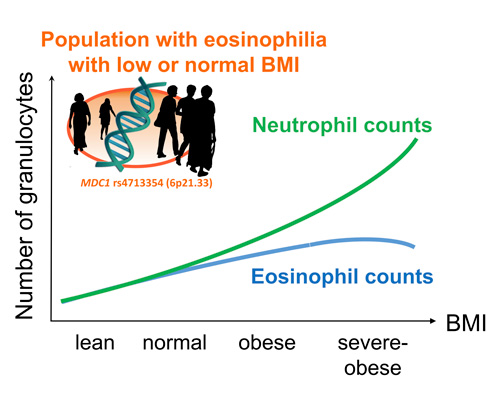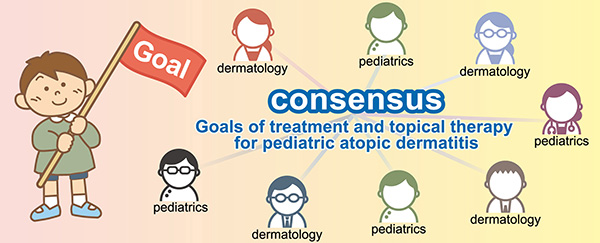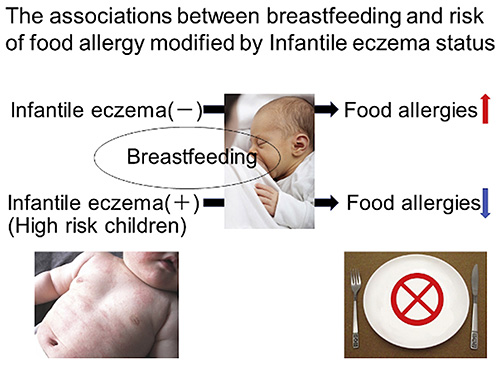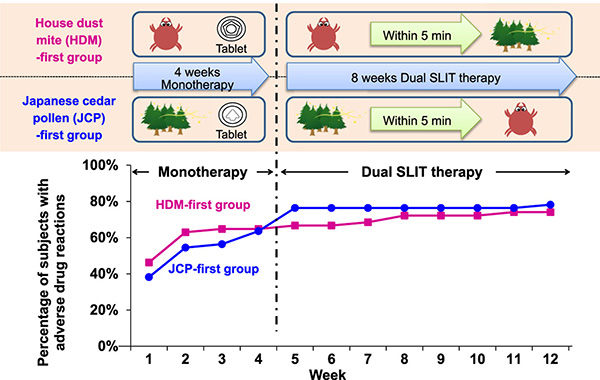Volume 69, Issue 1 (January 2020)
Editor's Choices
Correlation between eosinophil count, its genetic background and body mass index: The Nagahama Study
Editor’s comment: It is well established that obesity increases the risk for severe asthma; however, the impact of eosinophilic inflammation on obese asthmatic patients remains controversial because of the lack of epidemiological data for the general population. To elucidate the correlations between blood eosinophil count and obesity in the general population, the authors assessed the correlations between BMI and eosinophil counts using a multifaceted approach, including cluster analysis, in a community-based Nagahama study in Japan. They found that there may be a positive association between blood eosinophil counts and BMI in general, but there was a negative correlation in the population with high eosinophil counts. In addition, GWAS and human leukocyte antigen (HLA) imputation identified the rs4713354 variant for elevated eosinophil counts, independent of BMI or IgE.
Editor’s comment: Pediatric atopic dermatitis (PAD) is frequently seen in dermatological and pediatric practices. Therefore, it is important to obtain common views regarding diagnosis, treatment, and evaluation methods for PAD among dermatologists and pediatricians. Based on questionnaire surveys, 24 dermatologists and 25 pediatricians discussed these issues in PAD Consensus Forums. As a result of these discussions, consensus on seven topics (three regarding treatment goals and four on drug therapy) was obtained (see this article for more information). The consensus is expected to help practitioners set appropriate treatment goals in clinical practice and facilitate the choice of drugs for treatment.
Editor’s comment: The prophylactic effects of breastfeeding on food allergy remain controversial. Matsumoto et al. conducted a retrospective cohort study of 46,616 children from the Longitudinal Survey of Newborns in the 21st Century in Japan to uncover the effects of breastfeeding on food allergy, focusing on eczema-mediated percutaneous sensitization. They showed that breastfeeding, especially colostrum, had prophylactic effects on food allergy only among high-risk children with infantile eczema, whereas prolonged breastfeeding increased the risk of food allergy, suggesting that infantile eczema status modifies the associations between breastfeeding and food allergy.
Editor’s comment: Many patients with allergic rhinitis are sensitized to multiple allergens. In this study, Gotoh et al. show the results of a trial of dual SLIT tablet therapy for allergic rhinitis to house dust mites (HDM) and to Japanese cedar pollen (JCP), the most common coexisting perennial and seasonal allergens in Japan. Patients received 4 weeks of monotherapy with either HDM or JCP SLIT tablets, followed by 8 weeks of dual therapy with both tablets. They found that dual therapy with SLIT tablets was well tolerated and induced the expected immunological responses.






